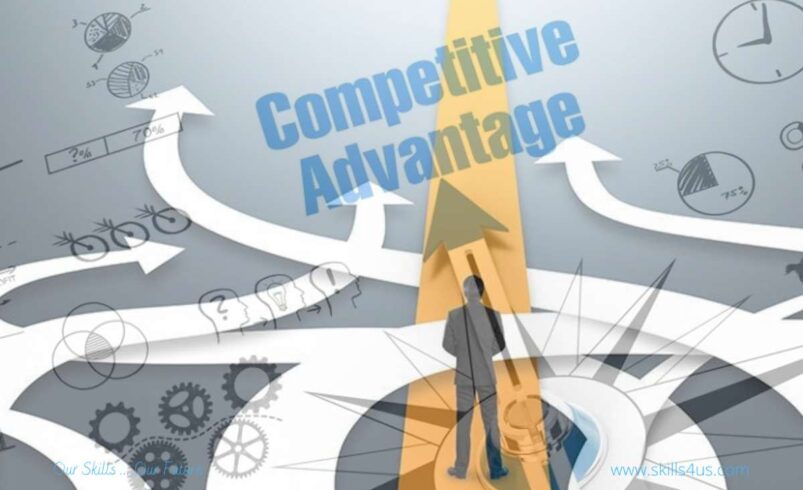Cost Structures and Competitive Advantage
When it comes to equity research, it’s easy to get caught up in top-line growth and headline-grabbing earnings figures. But beneath the surface, cost structures tell a deeper, often more strategic story. For UK equity analysts seeking sustainable investment opportunities, understanding how companies manage costs can reveal much about their competitive positioning and future potential.
Understanding Cost Structures: The Building Blocks
Cost structures reveal how a company creates value and manages risk, going beyond simple accounting categories.
Fixed costs (e.g., rent, salaries) remain constant, while variable costs (e.g., raw materials, labour) fluctuate with output. This balance helps analysts assess a company’s operating leverage—how sensitive profits are to changes in revenue. For example, a UK airline with high fixed costs experiences sharper profit swings than a lean online retailer with variable costs.
Direct costs are tied to production (e.g., raw materials), while indirect costs support broader operations (e.g., administrative expenses). Misunderstanding these can distort margin expectations, especially in diversified companies with shared functions.
COGS represents the direct cost of producing goods, while SG&A covers operating expenses like marketing and salaries. For analysts, distinguishing between these is key to evaluating gross margin and operational efficiency, particularly in consumer sectors like FMCG or retail.
This content takes a deep dive into fixed vs. variable costs.
Strategic Implications of Cost Structures
A company’s cost structure provides insight into its competitive strategy, scalability, and resilience.
High fixed-cost models, like those in the UK rail or energy sectors, see profits soar in good times but drop sharply in downturns. In contrast, low fixed-cost businesses, such as cloud providers, offer more flexibility and stable earnings.
Businesses with low marginal costs (e.g., SaaS) can scale with minimal expense, driving margin growth and justifying higher valuations, especially in the UK tech sector.
Certain costs, like severance or long-term leases, remain even when revenue falls, creating “cost stickiness.” This is a key risk in cyclical industries such as manufacturing or hospitality.
Larger companies benefit from lower per-unit costs through bulk buying and shared infrastructure. For example, UK supermarkets enjoy pricing advantages over smaller competitors, leading to higher margins and stronger market positions.
Cost Structures as a Competitive Moat
Cost structure can be a powerful barrier to entry and a key competitive advantage.
Companies like Aldi and Primark thrive by offering cost-efficient products with streamlined supply chains, undercutting competitors rather than innovating. In contrast, luxury brands like Burberry focus on perceived value, with a lean model enhancing margins while maintaining brand identity. Analysts must understand which strategy a company follows to assess margin sustainability.
Owning parts of the supply chain, such as a UK utility company controlling its distribution network, provides better cost visibility and control, reducing exposure to price shocks and ensuring margin stability.
Investing in technologies like AI or robotics shifts costs from variable labour to fixed infrastructure, boosting productivity and reducing errors. Analysts should assess both the costs and returns of such investments in modern UK firms.
Sector-Specific Considerations for UK Analysts
Different sectors in the UK have unique cost characteristics, requiring tailored analysis for deeper insights.
Margins are influenced by supply chain costs, inventory turnover, and seasonality. Analysts should watch for promotions or clearance cycles that can temporarily distort COGS and impact quarterly earnings.
Digital-first banks like Revolut or Monzo benefit from low marginal costs and scalability, while legacy banks with branch networks face high fixed costs. Digital transformation is crucial for maintaining cost competitiveness.
Fixed costs like depreciation and energy prices are significant in this sector. Analysts should focus on capex cycles, asset utilisation, and pricing power, while labour costs may fluctuate due to wage inflation or union negotiations.
R&D is a major fixed cost, but successful outcomes can generate valuable IP and recurring revenue. Analysts should evaluate R&D efficiency—how much return is generated per pound spent on research.
Cost Structure and Equity Valuation
Understanding costs is essential for interpreting a company’s valuation multiple and forecasting its future earnings power.
Impact on Margins and Multiples
Gross margins can highlight a company’s pricing power, while operating margins reveal cost discipline. A business with flat revenues but rising margins may be creating value through cost optimisation. For analysts, that’s a crucial signal.
Forecasting Earnings Under Different Scenarios
Scenario analysis is only as good as your understanding of cost flexibility. A firm with high variable costs may weather revenue shocks better than one locked into expensive fixed commitments. This is key when evaluating cyclicals or companies exposed to macro volatility like UK exporters.
Discount Rate and Risk Perception
Firms with volatile margins due to high fixed costs may be assigned a higher equity risk premium, affecting their valuation. Analysts should weigh how cost structure impacts beta, cash flow predictability, and ultimately, the discounted cash flow (DCF) valuation.
Conclusion
Cost structures do more than shape profitability—they define how companies compete, scale, and endure. For UK equity analysts, digging into the anatomy of cost is essential for forecasting earnings, assessing risk, and identifying lasting value.
Ultimately, understanding cost dynamics gives you a sharper strategic lens—one that can set your analysis apart and help uncover market mispricings that others may overlook. Revisit your models. Re-examine your assumptions. Because in a competitive market, cost insights are a competitive edge.

